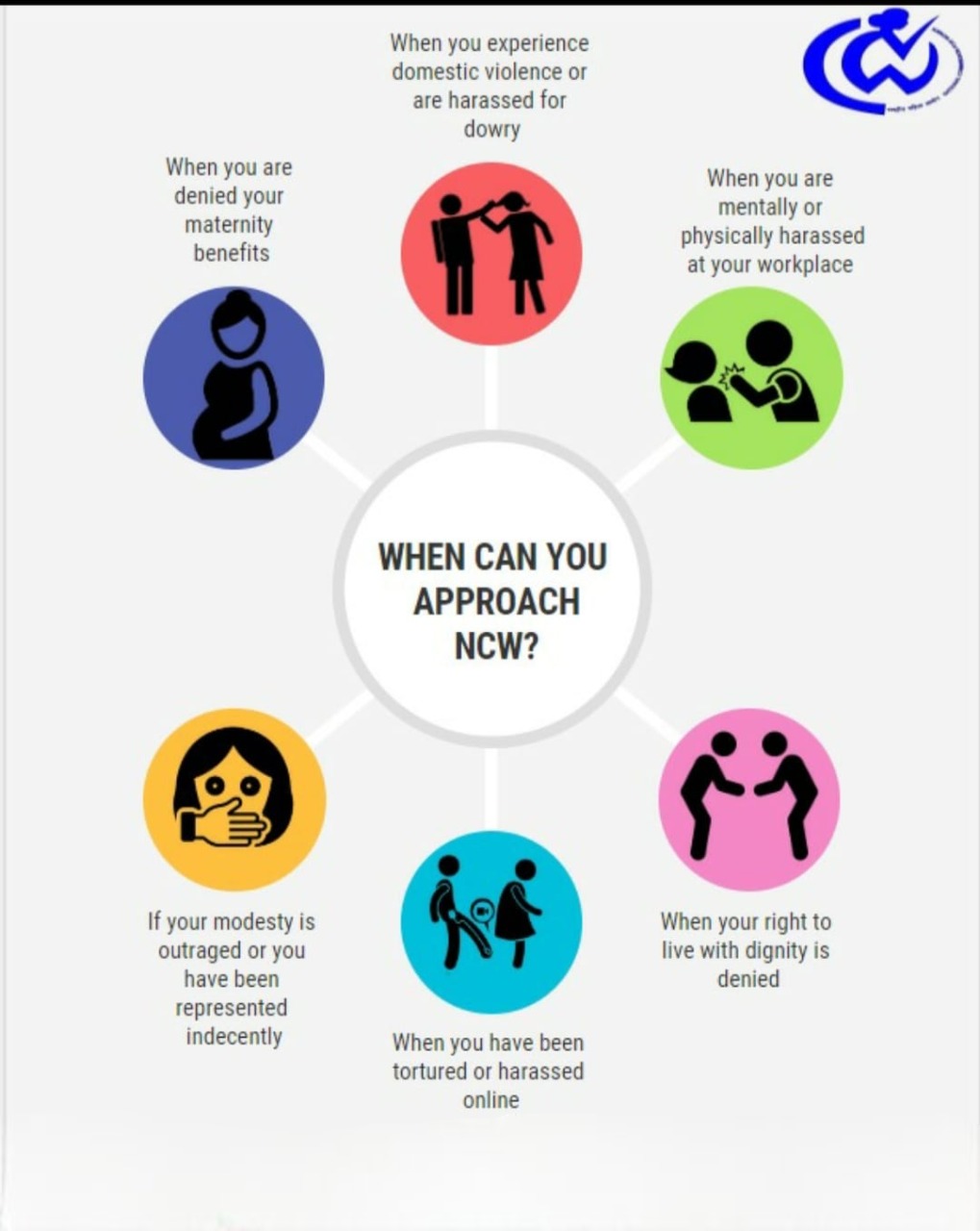More cases of sexual assault surface
Context
On May 6, a 45-year-old lady was stripped and set on fire in Imphal East, two days after three women were stripped, paraded, and one of them was sexually assaulted in Manipur’s Thoubal district. On social media, a picture of the woman’s burned body has recently appeared.
What are the different types of acts of violence faced by women in India?
India has a serious problem with violence against women, which takes many different forms and is pervasive all over the nation. Here are some examples of the various forms of violence women experience in India:
- Domestic Violence: One of the most prevalent types of violence against women in India is domestic violence. It covers abuse that takes place inside the context of the family or the home, including physical abuse, emotional abuse, verbal abuse, and economic abuse.
- Sexual Harassment: Sexual harassment is a common occurrence in public areas, workplaces, educational institutions, and even internet platforms. It includes unwelcome advances, remarks, gestures, and any other actions that make women feel threatened, hostile, or insulting.
- Violence Associated With Dowry: In some regions of India, there is a long-standing custom for the bride’s family to present the groom’s family with gifts or money. Some dowry disagreements culminate in violence against the bride, and in extreme circumstances, they even cause dowry killings (bride burning).
- Honour killings: In honour killings, family members kill women who they believe will bring disgrace or dishonour to the family. This is frequently the result of inter-caste or inter-religious connections or claimed immoral behaviour.
- Human Trafficking: Women and girls in India are particularly at risk of being trafficked for a variety of reasons, including forced labour, domestic servitude, and sexual exploitation.
- Acid Attacks: In acid attacks, caustic substances are thrown at women, severely disfiguring them and causing emotional distress. These assaults are frequently carried out in retaliation, envy, or rejection.
- Other issues: Some of the other acts of violence faced by women in our country are Female Infanticide and Feticide, Child Marriage, Cyberbullying and Online Harassment, and Violence during Communal Clashes.
Violence against Women Reported in Manipur
There have been several horrible reports of violence against women in the Indian state of Manipur. These consist of:
- Thoubal Incident: In the Thoubal district, three women were stripped off their clothes and exhibited naked, with one of them being raped. On May 6, a 45-year-old lady was stripped and burned alive in Imphal East, according to a photo that has leaked on social media.
- Racial Conflict Context: The racial unrest that arose in the state at the same time as these crimes added to the difficulty of the situation.
- Harassment at Manipur University: On May 3, students and staff from Kuki-Zomi communities faced alleged harassment and abuse on the Manipur University campus in Imphal.
- Harassment at Nightingale Nurse Institute: On May 4, two young women were allegedly harassed at the Nightingale Nurse Institute in Imphal.
- Rape and Murder in Konung Mamang: On May 5, two young women were allegedly raped and murdered in the Konung Mamang area of Imphal.
- Killing in Pheitaiching Village: A 45-year-old woman was killed in Pheitaichingvillage of Kangpokpi district.
- Sexual Assault in Wangkhei: On May 15, an 18-year-old woman was sexually assaulted in Wangkhei.
What was the response of the National Commission for Women in this matter?
- The Government of India’s National Commission for Women (NCW) is a statutory organization tasked with providing advice to the government on all issues about women’s policy.
- Alleged Incident: On June 12, the National Commission for Women (NCW) received information about an alleged incident in which women were severely abused and paraded while naked in Manipur, India.
- Email appeal: Rekha Sharma, chairwoman of NCW, received an email from two women activists and the North American Manipur Tribal Association (NAMTA), a civil society organization. Six instances of assault and violence against Kuki women in Manipur were detailed in the plea.
- Request for NCW Intervention: The plea asked the NCW to “take suo motu cognizance of the matter and, if possible, constitute an Inquiry Committee” to look into the instances and address the problem of violence against Kuki-Zomi women.
- NCW’s Response: Rekha Sharma, the head of NCW, stated that the commission has taken suo motu notice of the occurrence in response to the outcry from the public.
- Correspondence with the government of Manipur: But it turned out that through the email appeal, the NCW had previously been informed of the incidents on June 12. The NCW then wrote to the Manipur government four more times, on May 23, May 29, June 19, and July 20, pleading with them to act.
Laws to protect women
- Article 14: Equality before Law
- All individuals in India are equal before the law, and no one shall be discriminated against on grounds of religion, race, caste, sex, place of birth, or any other factor.
- This ensures that the state treats all citizens impartially and does not grant any special privileges to certain groups or individuals.
- Article 15: Prohibition of Discrimination
- The State is prohibited from discriminating against any citizen on the basis of religion, race, caste, sex, place of birth, or any combination of these factors.
- However, Article 15(3) allows the State to make special provisions for the protection of women and children.
- Article 15(4) permits the State to make special provisions for the advancement of socially and educationally backward classes of citizens (i.e., Scheduled Castes, Scheduled Tribes, and Other Backward Classes).
- Article 39: Directive Principles of State Policy – Social Welfare
- Article 39 directs the State to frame policies to secure social and economic justice.
- It requires the State to direct its policy towards securing for men and women equally the right to an adequate means of livelihood (Article 39(a)).
- The State is also urged to ensure equal pay for equal work for both men and women (Article 39(d)).
- Article 42: Humane Conditions of Work and Maternity Relief
- The State is obligated to make provisions for securing just and humane conditions of work for workers.
- It should also provide maternity relief to female workers to protect their health and well-being during pregnancy.
- Article 51A (e): Fundamental Duty – Dignity of Women
- Every citizen of India has a fundamental duty to renounce practices derogatory to the dignity of women.
- This encourages citizens to promote gender equality and respect for women’s rights.
- The Immoral Traffic (Prevention) Act, 1956
- The Dowry Prohibition Act, 1961 (28 of 1961) (Amended in 1986)
- The Commission of Sati (Prevention) Act, 1987 (3 of 1988)
- Protection of Women from Domestic Violence Act, 2005
- The Sexual Harassment of Women at Workplace (PREVENTION, PROHIBITION and REDRESSAL) Act, 2013
- The Criminal Law (Amendment) Act, 2013
- The Indecent Representation of Women (Prohibition) Act, 1986
How can we prevent further violence against women from happening?
- Raise Awareness: Initiate public education programs to inform the public about the value of gender equality, the rights of women, and the negative effects of violence against women. Use various media channels to reach more people and dispel damaging preconceptions.
- Empower Women: Encourage and support initiatives that give women more economic, social, and political clout. Women are more likely to challenge abusive situations and seek assistance when they are economically independent and have access to resources.
- Enhance Laws: Promote stricter laws and regulations that safeguard women’s rights and deter violent offenders. Make sure that the law is strictly upheld and that victims receive justice.
- Community Involvement: Engage your local leaders, communities, and other influential groups in the fight against violence against women. Support from the community can make the area safer and less tolerant of such behaviour.
- Encourage Gender Sensitization: Bring respect for women’s rights and gender sensitization to companies, colleges, and schools. Encourage boys and men to develop a culture of respect and empathy early on.
- Enhance Support Services: Improved Support Services Create and enhance shelters, counselling facilities, and helplines as resources for victims of violence. Make sure survivors can receive these programs without worrying about prejudice or stigma.





